
Portsmouth is an independent city in Virginia southwest and across the Elizabeth River from Norfolk. As of the 2010 census, the population was 95,535. It is part of the Hampton Roads metropolitan area.

Gosport is a town and non-metropolitan borough on the south coast of Hampshire, South East England. At the 2011 Census, its population was 82,662. Gosport is situated on a peninsula on the western side of Portsmouth Harbour, opposite the city of Portsmouth, to which it is linked by the Gosport Ferry. Gosport lies south-east of Fareham, to which it is linked by a Bus Rapid Transit route and the A32. Until the last quarter of the 20th century, Gosport was a major naval town associated with the defence and supply infrastructure of Her Majesty's Naval Base (HMNB) Portsmouth. As such over the years extensive fortifications were created.

Queen's House is a former royal residence built between 1616 and 1635 near Greenwich Palace, a few miles down-river from the City of London and now in the London Borough of Greenwich. It presently forms a central focus of what is now the Old Royal Naval College with a grand vista leading to the River Thames. Its architect was Inigo Jones, for whom it was a crucial early commission, for Anne of Denmark, the queen of King James I. Queen's House is one of the most important buildings in British architectural history, being the first consciously classical building to have been constructed in the country. It was Jones's first major commission after returning from his 1613–1615 grand tour of Roman, Renaissance, and Palladian architecture in Italy.

The Palace of Placentia, also known as Greenwich Palace, was an English royal residence that was initially built by Humphrey, Duke of Gloucester, in 1443. It was located at Greenwich on the bank of the River Thames, downstream from London. The original residence was extensively rebuilt around 1500 by Henry VII. A detached residence the Queen's House was built on the estate in the early 1600s and still survives. In 1660, the main palace was demolished by Charles II to make way for a proposed new palace, which was never constructed. Nearly forty years later, the Greenwich Hospital was built on the site.

Albertopolis is the nickname given to the area centred on Exhibition Road in London, named after Prince Albert, consort of Queen Victoria. It contains many educational and cultural sites. It is in South Kensington, split between the Royal Borough of Kensington and Chelsea and the City of Westminster, and the area bordered by Cromwell Road to the south and Kensington Road to the north.
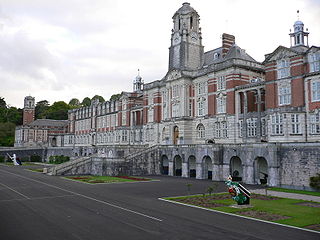
Britannia Royal Naval College (BRNC), commonly known as Dartmouth, is the naval academy of the United Kingdom and the initial officer training establishment of the Royal Navy. It is located on a hill overlooking the port of Dartmouth, Devon, England. Royal Naval officer training has taken place in Dartmouth since 1863. The buildings of the current campus were completed in 1905. Earlier students lived in two wooden hulks moored in the River Dart. Since 1998, BRNC has been the sole centre for Royal Naval officer training.
The Centre for Recent Drawing (C4RD) is a non-commercial curatorial space in London, for the exhibition of recent drawing and providing access and discussion for current drawing practice, and to foster the audience for drawing within the general public. It was founded by Andrew Hewish in 2004.

Coade stone or Lithodipyra or Lithodipra was stoneware that was often described as an artificial stone in the late 18th and early 19th centuries. It was used for moulding neoclassical statues, architectural decorations and garden ornaments of the highest quality that remain virtually weatherproof today.

The Royal Naval Academy was a facility established in 1733 in Portsmouth Dockyard to train officers for the Royal Navy. The founders' intentions were to provide an alternative means to recruit officers and to provide standardised training, education and admission. In 1806 it was renamed the Royal Naval College and in 1816 became the Royal Naval College and the School for Naval Architecture. It was closed as a training establishment for officer entrants in 1837.

The Royal Naval School was an English school that was established in Camberwell, London, in 1833 and then formally constituted by the Royal Naval College Act 1840. It was a charitable institution, established as a boarding school for the sons of officers in the Royal Navy and Royal Marines. Many of its pupils achieved prominence in military and diplomatic service. The school closed in 1910.

HMS Collingwood is a stone frigate of the Royal Navy, in Fareham, England. It is the lead establishment of the Maritime Warfare School and the largest naval training organisation in Western Europe. The Maritime Warfare School is a federated training establishment incorporating HMS Excellent, the Defence Diving School, the RN Physical Training School, the School of Hydrography and Meteorology in Plymouth and the Royal Marines School of Music in Portsmouth Naval Base.

The Central School of Mathematics and Naval Construction was a short-lived shipbuilding college at Portsmouth Dockyard on the south coast of England. It was founded in 1848 but only lasted five years, until 1853. The first Principal was Joseph Woolley, who in 1864 would found the Royal School of Naval Architecture and Marine Engineering in South Kensington that became part of the Royal Naval College, Greenwich in 1873.
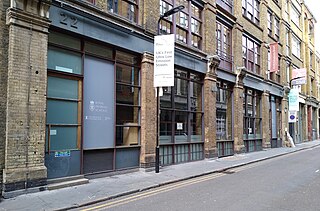
The Prince's Foundation School of Traditional Arts is a school in London which teaches students at the postgraduate degree level, and short open courses and in the community. The school was founded in 2005 by the Prince of Wales as part of The Prince's Charities group, with the aim "to continue the living traditions of the world's sacred and traditional art forms".

HMS King Alfred is a Royal Naval Reserve unit located in Portsmouth. The unit has a complement of over 200 reservists and provides training facilities to other lodger units, including the local Royal Marines Reserve (RMR) City of London, and local University Royal Naval Unit (URNU).

Mount House School is an independent day school for pupils from 11 to 18. The school is co-educational and is situated in Monken Hadley, in the London Borough of Barnet. It was previously the Architectural Association School between 1940-45; and then St Martha’s Catholic School for Girls was founded in 1947 at Mount House from the mid-20th Century until 2017.
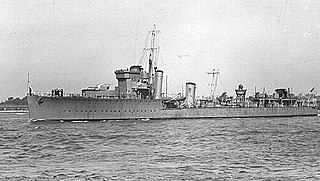
HMS Whitley (L23), ex-Whitby, was a W-class destroyer of the British Royal Navy that saw service in the British campaign in the Baltic Sea against Bolshevik forces during the Russian Civil War and in the early months of World War II.

HMS Vesper was a V-class destroyer of the British Royal Navy that saw service in World War I and World War II.
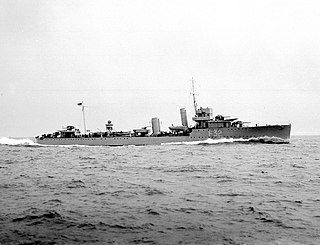
The first HMS Wessex (D43) was a W-class destroyer of the British Royal Navy that saw service in the final months of World War I and the early months of World War II.

The Royal Naval College, Greenwich, was a Royal Navy training establishment between 1873 and 1998, providing courses for naval officers. It was the home of the Royal Navy's staff college, which provided advanced training for officers. The equivalent in the British Army was the Staff College, Camberley, and the equivalent in the Royal Air Force was the RAF Staff College, Bracknell.
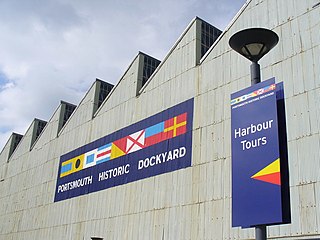
Portsmouth Historic Dockyard is an area of HM Naval Base Portsmouth which is open to the public; it contains several historic buildings and ships. It is managed by the National Museum of the Royal Navy as an umbrella organization representing five charities: the Portsmouth Naval Base Property Trust, the National Museum of the Royal Navy, Portsmouth, the Mary Rose Trust, the Warrior Preservation Trust Ltd and the HMS Victory Preservation Company. Portsmouth Historic Dockyard Ltd was created to promote and manage the tourism element of the Royal Navy Dockyard, with the relevant trusts maintaining and interpreting their own attractions. It also promotes other nearby navy-related tourist attractions.


















